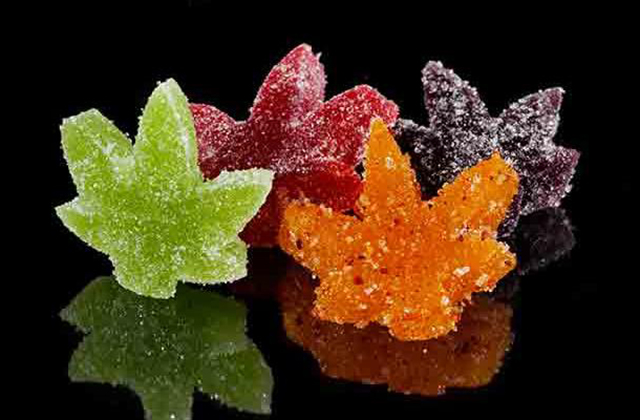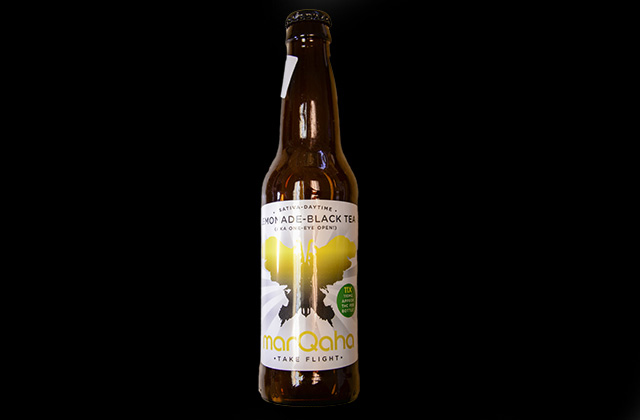+Controversy has stalked Colorado’s legal cannabis edibles industry since recreational sales began on New Year’s Day in 2014. Several high-profile deaths have been linked to ingesting marijuana, groups of freaked-out parents have worried about non-existent Halloween pranks and poison control centers have reported an increase in calls about accidental ingestion.
The authorities have reacted with hysteria, and their newly enacted solution to the problem of accidental ingestion by children is not rooted in logic. Wednesday’s rejection of an amendment that would have loosened the requirements passed in an earlier emergency session will require edibles to be “shaped, stamped, colored or otherwise marked, when practicable, with a standard symbol indicating that it contains marijuana and is not for consumption by children,” a decision unanimously approved by the state legislature.

New Colorado regulations will require all edible cannabis foods to be identifiable as containing weed outside of their packaging, a job accomplished by these gummies from Marijuana & Munchies in California.
The emergency rules, which went into effect on August 1, 2014, required a standardized serving size of 10 milligrams of THC to be physically separate with no more than 100 mg per package, meaning manufacturers have had to cut brownies into ten pieces before packaging. Child-resistant, F-1 grade pharmaceutical packaging was also mandated. While the emergency rules also included the requirement to “shape, stamp or otherwise mark products—when practicable” to be identifiable as containing cannabis outside of their packaging, this provision was postponed in order to allow a working group to determine how to implement it, including designing a universal symbol.
Composed of stakeholders, including edibles makers, dispensary owners, cannabis lab operators, members of the Marijuana Enforcement Division (MED), law enforcement, representatives of Children’s Hospital and concerned parent groups like Smart Colorado, the HB 14-1366 working group met several times between August and November 2014 to discuss recommendations intended to solve the problem of accidental ingestion of cannabis foods by children as well as adults.
Jaime Lewis, chairperson of the Cannabis Business Alliance and founder of Mountain Medicine, was a member of the working group, which ultimately ended in a stalemate. Their report made several suggestions but failed to reach a consensus on whether they could or should uniformly mark items as disparate as drinks, baked goods, sauces, candies and chocolate with the same universal symbol.
“Makeup and Tide pods are more dangerous to children,” Lewis remarked. “The MED report came back sort of inconclusive, not really favoring one way or the other, because the idea to stamp or mark these products—because there’s such a wide array—would be very difficult.”
Cannabis industry representatives were frustrated by the lack of understanding displayed by their adversaries, many of whom remain philosophically opposed to legal cannabis and ignorant of marijuana’s remarkable record for safety. Tim McDowell, proprietor of MarQaha, expressed disappointment at the legislature’s decision.
“Edibles are under such scrutiny,” McDowell said, “and it’s openly acknowledged that the goal of Smart Colorado is to repeal legal pot laws… they’re not gonna stop with edibles.”

How can liquid products like MarQaha’s award-winning Sativa Lemonade be marked or stamped outside of their package? It seems impracticable.
MarQaha’s bestselling products include liquid beverages and tinctures, which certainly seem “impracticable” to stamp or mark outside of their packaging. The meaning and interpretation of the word “impracticable” included in the new rules is open to debate, which will most likely have to be settled in court.
“It creates a grey area,” McDowell explained, “…we used to have regulations that were pretty black and white.”
Never mind that there’s no data indicating that stamping or otherwise marking edibles products will successfully prevent accidental ingestion by children. The age group most likely to be affected by accidental ingestion is toddlers, who will put anything in their mouths regardless of color, shape, taste or edibility.
Children’s Hospital presented statistics showing that out of 119 calls to poison control, 79 percent of the exposures to cannabis occurred at home (94 cases), 76 percent visited a healthcare facility (90 cases), 23 percent were admitted (27 cases) and 16 percent showed major or moderate effects (19 cases) with “unintentional ingestions of marijuana remaining low relative to ingestions of other toxic items.”
The percentage of accidental ingestion cases in the newly legal marketplace has been very small indeed, with a $400-million infused-product market in Colorado, where an estimated 5 million edibles have been sold.
Marijuana is non-toxic, so while an overdose of THC can be scary and physically debilitating, no one has ever died directly from ingesting it. Children treated for too much THC are routinely given lots of fluids and saline injections, fed nutritious meals and observed while in a calm and quiet place until they eventually recover. This is a much less invasive and dramatic treatment compared with the actions taken when a child ingests potentially fatal pharmaceuticals or chemicals, which include inducing vomiting, stomach pumping, intravenous fluids, dialysis and antidote medication.
With 79 percent of accidental ingestion cases taking place at home, it seems the answer to this problem is parental education. After edibles are purchased, it becomes the responsibility of the consumer to make sure they are used in a lawful, safe manner and kept away from children.
“They’re not giving the industry time to see if the regulations already put in place are actually working,” Lewis explained, referring to the new child-resistant packaging and 10 milligram standardized dose. “We need sound, strong statistical tracking to determine where these accidental ingestions are coming from. Was it an industry product or was it from the black market?”
While the new rules as laid out by HB 14-1366 further tighten the red tape surrounding an already heavily regulated industry, they do nothing to address homemade edibles, which are easier for adults to over-consume and for children to accidentally ingest due to lack of packaging and lab-tested dosage information. Making store-bought products more expensive and unappealing will only drive consumers to create homemade edibles or bolster unregulated black market sales.
“Adding additional regulations and forcing us to raise our prices then fuels the need for the consumer to create their own products at home,” Lewis continued. “And it’s less controlled, less regulated. It’s not even tested, so as to how much THC is in something, it can be inconsistent and cause problems.”

Edibles created at home can sidestep state regulations entirely.
Julie Dooley, proprietor of Julie’s Baked Goods, was also a member of the 1366 workgroup. As a mother of three and tireless advocate for responsible consumption, Julie said she is “opposed to this bill as the stakeholders group proved that packaging and safe storage are the best defense against accidental ingestion, but to remain in business I need to begin formulating ways to comply.”
Currently, no decisions have been made about the type of stamping, shaping or coloring that will need to be done to make cannabis products distinguishable from regular food. Suggestions from workgroup member John Wisler, a food product development specialist, included airbrushing or stenciling baked goods, applying some type of brand directly onto the surface of the food to make an impression or using frosting to create a universal symbol.
Chocolate and hard candies can be molded or stamped more easily, and edible film can be used to coat foods with a graphic. Whatever symbols and techniques are ultimately chosen, Dooley asserts that “for compliance this must be decided quickly so manufacturers can begin to create the identifying product to be ready for deadlines that surely will be enacted.”

Educational campaigns are the best way to inform the public about sensible cannabis consumption habits.
Edibles makers will continue to lobby and push back against costly, nonsensical regulations and urge lawmakers to make public education campaigns a high priority. New initiatives to inform the public about edible safety and legal marijuana laws include Colorado State’s Good to Know, Marijuana Policy Project’s Consume Responsibly and First Time 5, which urges new users to begin by eating only 5 milligrams of THC and “to start low and go slow.”
McDowell started CannabisIsSafe.com to inform his customers about responsible edible ingestion, and he maintains that education is the key to protecting public health and safety.
“Any company worth their salt is doing this [an educational campaign],” McDowell said, “even though the facts show there’s no crisis here.”


















